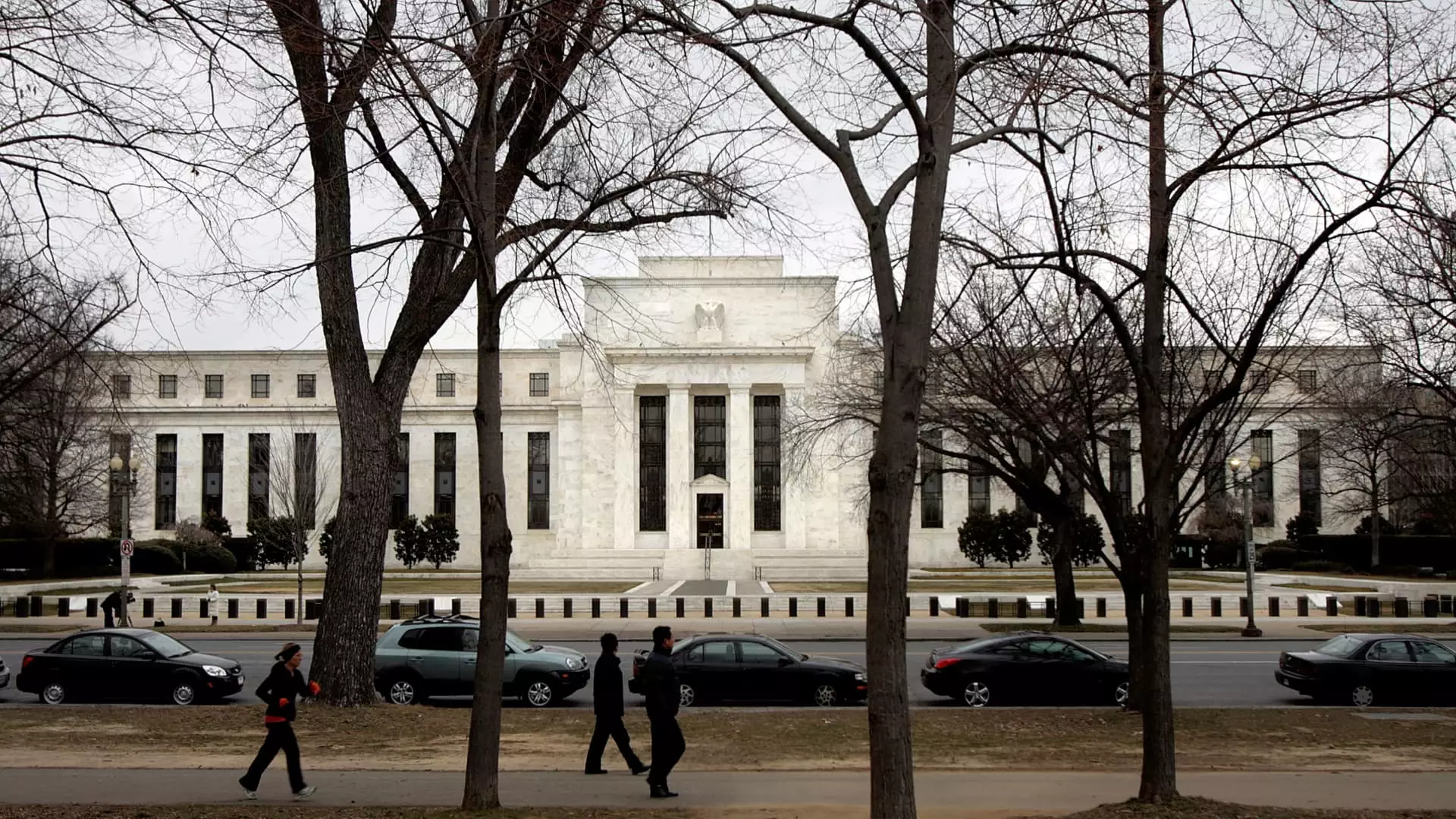The Federal Reserve’s latest announcement to keep interest rates steady comes as inflation continues to exceed its target of 2%. This decision reflects a significant context shaped by previous actions, notably the drastic interest rate cuts implemented last year, which brought the benchmark rate down by a full percentage point. The current economic environment is wrought with complexities, where perennial inflation has persisted since the pandemic’s onset, leading to a cost-of-living crisis for many American households. President Donald Trump’s recent comments, advocating for immediate rate cuts, underscore the ongoing tension between political pressures and the Fed’s mandate to maintain economic stability.
The present economic indicators reveal a mixed bag. While some data suggest a moderation in inflationary pressures, Michele Raneri from TransUnion warns that underlying concerns remain. This suggests that a cautious approach is needed, indicating that consumers can expect minimal immediate relief from high borrowing costs. With Fed officials projecting only two additional rate cuts this year, the scope for significant economic improvement seems constrained.
The implications of the Federal Reserve’s stance are particularly stark for consumers navigating a landscape of high prices and elevated borrowing costs. Following the Fed’s aggressive rate hikes, many forms of consumer credit are now more expensive. The federal funds rate, although not reflective of consumer-specific rates, still serves as a significant determinant influencing the cost structures for loans, credit cards, and mortgages.
For instance, the average interest rate on credit cards has surged to over 20%—a troubling figure that places tremendous strain on households. According to Bankrate’s chief financial analyst Greg McBride, although anticipated rate cuts may gradually alleviate borrowing costs, they are unlikely to bring about substantial changes soon. Individuals entrenched in high-interest credit card debt are urged to explore consolidation options or seek balance transfer opportunities, strategies that could offer a lifeline amid rising costs.
In the realm of real estate, potential homebuyers are also feeling the pinch. Despite the 30-year fixed mortgage rate currently hovering above 7%, economic forces, including inflation, have curtailed purchasing power significantly. As people contend with increasing home prices, which have been largely influenced by the Fed’s policies, affordability becomes a pressing issue. Greg McBride’s prediction that mortgage rates may linger in the 6% range underscores the difficulties for those seeking to enter or transition within the housing market.
Prospective homebuyers face the challenge of evaluating the financial feasibility of new properties in the context of higher costs and fixed-rate structures. If they wish to utilize potential rate cuts, refinancing or moving becomes essential, but this involves significant logistical and financial hurdles.
Automotive financing has similarly mirrored this trend. With rising car prices putting constraints on budgets, borrowers now face an average interest rate of 5.3% on five-year loans for new vehicles. Edmunds’ consumer insights analyst, Joseph Yoon, highlights the ongoing affordability challenges in the vehicle market, exacerbated by both price inflation and interest rate fluctuations.
Meanwhile, federal student loan rates remain fixed but have not remained unaffected by the overarching economic climate. Notably, borrowers who secured direct federal student loans for the 2024-25 academic year now face higher rates than their predecessors. While these fixed rates shield borrowers from immediate volatility, those involved with private student loans often encounter a direct correlation with fluctuating indices, ultimately resulting in higher individual costs.
Conversely, there is a bright side for savers amidst this complex landscape. As interest rates remain relatively stable, the yield on online savings accounts has surged to levels not seen in over a decade, with some accounts still offering returns near 5%. This situation presents an advantageous opportunity for consumers to seek out high-yield savings accounts, thereby allowing them to capitalize on the current climate even as they struggle with rising debt costs.
As Schulz aptly notes, while the Federal Reserve’s decision to delay aggressive rate cuts may be frustrating for those grappling with high borrowing costs, it creates a promising environment for saver sentiments—an important consideration as consumers navigate their financial decisions.
The Federal Reserve’s recent decisions carry considerable weight for consumers, particularly during a time marked by inflation and increasing economic pressure. As stakeholders across various sectors prepare for a year that promises only a handful of modest rate cuts, the path ahead remains fraught with uncertainty. Both consumers and financial analysts alike must remain vigilant, adapting their approaches to manage the interplay of consumer debt, investment strategies, and savings practices in this evolving economic landscape. The ultimate impacts, while still unfolding, will demand careful monitoring to navigate the challenges ahead successfully.

